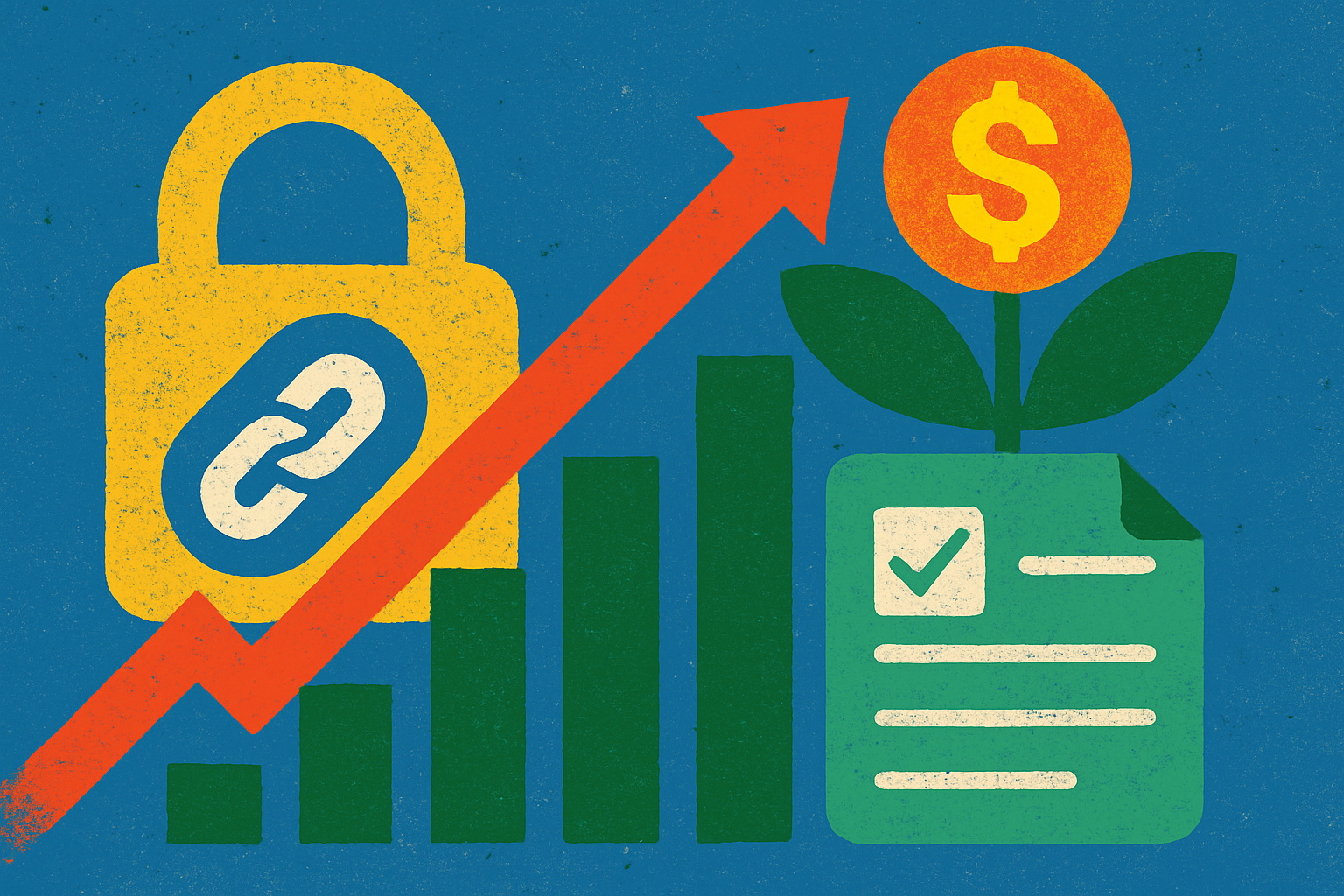
Reinsurance has long operated behind closed doors, with capital flows and risk exposures largely opaque to outside observers. On-chain reinsurance collateralization is fundamentally changing that paradigm by leveraging blockchain technology and programmable smart contracts to deliver full transparency, real-time auditing, and operational efficiency across the insurance capital stack.

Tokenization: The Foundation of On-Chain Collateralization
At the heart of on-chain reinsurance collateralization is tokenization. Investors deposit stablecoins such as USDC into blockchain-based smart contracts, receiving yield-bearing tokens that represent fractional ownership in a diversified portfolio of reinsurance contracts. These tokens are not merely digital receipts; they are programmable assets that can be integrated with decentralized finance (DeFi) protocols for secondary trading or used as collateral in lending markets. This structure unlocks liquidity and democratizes access to insurance returns, previously reserved for institutional players.
Platforms like OnRe and Re Protocol have pioneered this approach. For example, Re Protocol channels on-chain capital directly into real-world reinsurance treaties via a fully transparent workflow, allowing participants to stake stablecoins and earn diversified insurance yields. The process is governed by smart contracts that enforce strict rules over fund deployment, premium collection, and claims payouts, eliminating the need for manual intervention or opaque intermediaries.
Surplus Notes and Capital Deployment: Bridging On-Chain Assets with Real-World Risk
The next critical step involves deploying this pooled capital into actual reinsurance arrangements. Most leading protocols use legally binding surplus notes, debt instruments that rank junior to policyholder claims but senior to equity holders, to lend funds to vetted reinsurers. These funds are then transferred into regulated trust accounts, where they serve as admitted collateral for backing live insurance policies.
This architecture provides two essential benefits: first, it ensures that on-chain investors are structurally protected by robust legal frameworks; second, it creates a seamless bridge between blockchain-native assets and traditional insurance obligations. All transfers in and out of these trust accounts are tracked on-chain, providing an immutable audit trail accessible at any time by regulators, auditors, or investors.
Proof of Reserves: Real-Time Transparency through Oracles
The linchpin of blockchain insurance transparency is the integration of proof-of-reserves mechanisms using decentralized oracles. These oracles publish real-time data feeds about trust account balances, premium inflows from cedents (primary insurers), and claim outflows to beneficiaries, all directly onto the blockchain. Smart contracts then reference these feeds to programmatically verify whether reserve levels meet regulatory or policy-defined minimums before authorizing new underwriting activity or investor redemptions.
This continuous monitoring eliminates information asymmetry between reinsurers and capital providers, a persistent pain point in legacy markets, and substantially reduces counterparty risk. For investors seeking exposure to insurance capital layers on the blockchain, this means unprecedented confidence that every dollar at risk is fully collateralized 24/7.
If you want a deeper dive into how these mechanisms transform traditional processes, see our analysis here.
Transparency, however, is only as strong as the mechanisms and governance that enforce it. The use of smart contracts in decentralized insurance protocols not only automates premium collections and claim settlements, but also ensures that no single party can manipulate reserve disclosures or capital flows. Every transaction, be it a deposit, claim payment, or redemption, is recorded immutably on-chain and can be independently verified by any stakeholder at any time.
Consider the operational leap this represents compared to legacy collateral management. Traditional reinsurance often relies on quarterly or annual reporting cycles, with reserve sufficiency typically confirmed by third-party audits well after the fact. On-chain collateralization replaces this lag with real-time, programmatic verification. As soon as premiums are received or claims are paid out, those actions update the blockchain record instantly and trigger automated adjustments to investor positions.
Liquidity and Secondary Markets: Unlocking New Capital Dynamics
One of the most compelling advantages of tokenized reinsurance capital is its inherent liquidity. Unlike traditional reinsurance investments, which are typically locked up for years, on-chain positions can be traded peer-to-peer or used as collateral within DeFi lending protocols. This flexibility attracts a broader range of investors and allows for dynamic risk allocation, particularly during periods of heightened catastrophe risk or market volatility.
Secondary trading also introduces new pricing dynamics for insurance risk. As tokenized reinsurance assets become more widely adopted, their market value will increasingly reflect real-time assessments of portfolio performance and underlying event exposures, something that was virtually impossible under previous models.
Risk Management and Regulatory Alignment
On-chain reinsurance collateralization does not operate in a regulatory vacuum. Leading protocols work closely with legal counsel to ensure that surplus notes and trust arrangements comply with insurance regulations in major jurisdictions. Blockchain-based proof-of-reserves systems are designed to meet or exceed the transparency standards expected by regulators, auditors, and institutional allocators.
This alignment is crucial for mainstream adoption. By providing regulators with direct access to live reserve data, and by automating compliance checks through smart contracts, these platforms offer an auditable path toward regulatory acceptance without sacrificing speed or efficiency.
The broader implication is clear: on-chain reinsurance collateralization is redefining what it means to manage risk capital in the digital age. With every transaction visible on the blockchain, investors gain confidence that their funds are always appropriately reserved; insurers benefit from operational agility; and regulators get transparent oversight without manual intervention.
The industry’s next chapter will be shaped by how quickly these innovations scale, and how effectively they integrate with both traditional insurance markets and emerging DeFi ecosystems. For those seeking a more technical breakdown of how smart contracts are transforming settlements across the sector, refer to our guide here.





